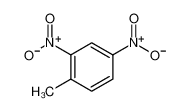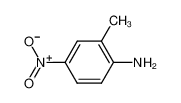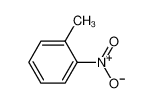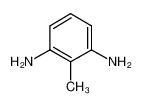1.Identification
1.1 GHS Product identifier
| Product name | 2-methyl-1,4-dinitrobenzene |
|---|
1.2 Other means of identification
| Product number | - |
|---|---|
| Other names | Toluene,2,5-dinitro |
1.3 Recommended use of the chemical and restrictions on use
| Identified uses | For industry use only. CBI |
|---|---|
| Uses advised against | no data available |
1.4 Supplier's details
| Company | MOLBASE (Shanghai) Biotechnology Co., Ltd. |
|---|---|
| Address | Floor 4 & 5, Building 12, No. 1001 North Qinzhou Road, Xuhui District, Shanghai, China |
| Telephone | +86(21)64956998 |
| Fax | +86(21)54365166 |
1.5 Emergency phone number
| Emergency phone number | +86-400-6021-666 |
|---|---|
| Service hours | Monday to Friday, 9am-5pm (Standard time zone: UTC/GMT +8 hours). |
2.Hazard identification
2.1 Classification of the substance or mixture
Acute toxicity - Oral, Category 3
Acute toxicity - Dermal, Category 3
Acute toxicity - Inhalation, Category 3
Germ cell mutagenicity, Category 2
Carcinogenicity, Category 1B
Specific target organ toxicity – repeated exposure, Category 2
Hazardous to the aquatic environment, long-term (Chronic) - Category Chronic 2
Reproductive toxicity, Category 2
2.2 GHS label elements, including precautionary statements
| Pictogram(s) |    |
|---|---|
| Signal word | Danger |
| Hazard statement(s) | H301 Toxic if swallowed H311 Toxic in contact with skin H331 Toxic if inhaled H341 Suspected of causing genetic defects H350 May cause cancer H373 May cause damage to organs through prolonged or repeated exposure H411 Toxic to aquatic life with long lasting effects H361f |
| Precautionary statement(s) | |
| Prevention | P264 Wash ... thoroughly after handling. P270 Do not eat, drink or smoke when using this product. P280 Wear protective gloves/protective clothing/eye protection/face protection. P261 Avoid breathing dust/fume/gas/mist/vapours/spray. P271 Use only outdoors or in a well-ventilated area. P201 Obtain special instructions before use. P202 Do not handle until all safety precautions have been read and understood. P260 Do not breathe dust/fume/gas/mist/vapours/spray. P273 Avoid release to the environment. |
| Response | P301+P310 IF SWALLOWED: Immediately call a POISON CENTER/doctor/… P321 Specific treatment (see ... on this label). P330 Rinse mouth. P302+P352 IF ON SKIN: Wash with plenty of water/... P312 Call a POISON CENTER/doctor/…if you feel unwell. P361+P364 Take off immediately all contaminated clothing and wash it before reuse. P304+P340 IF INHALED: Remove person to fresh air and keep comfortable for breathing. P311 Call a POISON CENTER/doctor/… P308+P313 IF exposed or concerned: Get medical advice/ attention. P314 Get medical advice/attention if you feel unwell. P391 Collect spillage. |
| Storage | P405 Store locked up. P403+P233 Store in a well-ventilated place. Keep container tightly closed. |
| Disposal | P501 Dispose of contents/container to ... |
2.3 Other hazards which do not result in classification
none
3.Composition/information on ingredients
3.1 Substances
| Chemical name | Common names and synonyms | CAS number | EC number | Concentration |
|---|---|---|---|---|
| 2-methyl-1,4-dinitrobenzene | 2-methyl-1,4-dinitrobenzene | 619-15-8 | none | 100% |
4.First-aid measures
4.1 Description of necessary first-aid measures
General advice
Consult a physician. Show this safety data sheet to the doctor in attendance.
If inhaled
Fresh air, rest. Refer for medical attention.
In case of skin contact
Remove contaminated clothes. Rinse and then wash skin with water and soap. Refer for medical attention .
In case of eye contact
Rinse with plenty of water for several minutes (remove contact lenses if easily possible).
If swallowed
Rinse mouth. Give a slurry of activated charcoal in water to drink. Refer for medical attention .
4.2 Most important symptoms/effects, acute and delayed
no data available
4.3 Indication of immediate medical attention and special treatment needed, if necessary
In case of ingestion, induction of emesis is not recommended because of the potential for central nervous system depression. Gastric lavage and administration of activated charcoal may be considered soon after ingestion, provided airways are protected. /Dinitrotoluene/
5.Fire-fighting measures
5.1 Extinguishing media
Suitable extinguishing media
WATER, DRY CHEMICAL, OR CARBON DIOXIDE FROM PROTECTED LOCATION.
5.2 Specific hazards arising from the chemical
no data available
5.3 Special protective actions for fire-fighters
Wear self-contained breathing apparatus for firefighting if necessary.
6.Accidental release measures
6.1 Personal precautions, protective equipment and emergency procedures
Use personal protective equipment. Avoid dust formation. Avoid breathing vapours, mist or gas. Ensure adequate ventilation. Evacuate personnel to safe areas. Avoid breathing dust. For personal protection see section 8.
6.2 Environmental precautions
Consult an expert! Personal protection: chemical protection suit including self-contained breathing apparatus. Do NOT let this chemical enter the environment. Sweep spilled substance into sealable containers. Carefully collect remainder. Then store and dispose of according to local regulations.
6.3 Methods and materials for containment and cleaning up
1) REMOVE ALL IGNITION SOURCES. 2) VENTILATE AREA OF SPILL. 3) FOR SMALL QUANTITIES, SWEEP ONTO PAPER OR OTHER SUITABLE MATERIAL & BURN IN SUITABLE COMBUSTION CHAMBER WHICH ALLOWS BURNING IN UNCONFINED CONDITION & IS EQUIPPED WITH APPROPRIATE EFFLUENT GAS CLEANING DEVICE. LARGE QUANTITIES MAY BE RECLAIMED...IF...NOT PRACTICAL, DISSOLVE IN FUEL OIL & ATOMIZE IN SUITABLE COMBUSTION CHAMBER EQUIPPED WITH APPROPRIATE EFFLUENT GAS CLEANING DEVICE. /DINITROTOLUENE/
7.Handling and storage
7.1 Precautions for safe handling
Avoid contact with skin and eyes. Avoid formation of dust and aerosols. Avoid exposure - obtain special instructions before use.Provide appropriate exhaust ventilation at places where dust is formed. For precautions see section 2.2.
7.2 Conditions for safe storage, including any incompatibilities
Fireproof. Separated from strong oxidants, food and feedstuffs and incompatible materials. See Chemical Dangers. Well closed. Keep in a well-ventilated room. Store in an area without drain or sewer access. Provision to contain effluent from fire extinguishing.Normally stored as a molten liquid. Separate from strong oxidizers & reducing agents. Hot water coils should not exceed 194 deg F (90°C). /Dinitrotoluenes/
8.Exposure controls/personal protection
8.1 Control parameters
Occupational Exposure limit values
NIOSH considers dinitrotoluene to be a potential occupational carcinogen. /Dinitrotoluene/
NIOSH usually recommends that occupational exposures to carcinogens be limited to the lowest feasible concentration. /Dinitrotoluene/
Recommended Exposure Limit: 10 Hour Time-Weighted Average: 1.5 mg/cu m, skin. /Dinitrotoluene/
Biological limit values
no data available
8.2 Appropriate engineering controls
Handle in accordance with good industrial hygiene and safety practice. Wash hands before breaks and at the end of workday.
8.3 Individual protection measures, such as personal protective equipment (PPE)
Eye/face protection
Safety glasses with side-shields conforming to EN166. Use equipment for eye protection tested and approved under appropriate government standards such as NIOSH (US) or EN 166(EU).
Skin protection
Wear impervious clothing. The type of protective equipment must be selected according to the concentration and amount of the dangerous substance at the specific workplace. Handle with gloves. Gloves must be inspected prior to use. Use proper glove removal technique(without touching glove's outer surface) to avoid skin contact with this product. Dispose of contaminated gloves after use in accordance with applicable laws and good laboratory practices. Wash and dry hands. The selected protective gloves have to satisfy the specifications of EU Directive 89/686/EEC and the standard EN 374 derived from it.
Respiratory protection
Wear dust mask when handling large quantities.
Thermal hazards
no data available
9.Physical and chemical properties
| Physical state | OtherSolid |
|---|---|
| Colour | Needles from alcohol |
| Odour | no data available |
| Melting point/ freezing point | 52.5ºC |
| Boiling point or initial boiling point and boiling range | 313.6ºC at 760 mmHg |
| Flammability | Combustible. Gives off irritating or toxic fumes (or gases) in a fire. |
| Lower and upper explosion limit / flammability limit | no data available |
| Flash point | 157.1ºC |
| Auto-ignition temperature | no data available |
| Decomposition temperature | no data available |
| pH | no data available |
| Kinematic viscosity | 0.0055393 Pa.s at 323.48 K (est) |
| Solubility | Soluble in ethanol; very soluble in carbon disulfide |
| Partition coefficient n-octanol/water (log value) | log Kow = 2.18 (est) |
| Vapour pressure | 0.0005 mm Hg at 25°C /extrapolated/ |
| Density and/or relative density | 1.407 g/cm3 |
| Relative vapour density | (air = 1): 6.3 |
| Particle characteristics | no data available |
10.Stability and reactivity
10.1 Reactivity
no data available
10.2 Chemical stability
Stable under recommended storage conditions.
10.3 Possibility of hazardous reactions
Combustible material. /3,4-Dinitrotoluene/Dust explosion possible if in powder or granular form, mixed with air.
10.4 Conditions to avoid
no data available
10.5 Incompatible materials
no data available
10.6 Hazardous decomposition products
When heated to decomposition it emits toxic fumes of /nitrogen oxides/.
11.Toxicological information
Acute toxicity
- Oral: LD50 Rat oral 707 mg/kg
- Inhalation: no data available
- Dermal: no data available
Skin corrosion/irritation
no data available
Serious eye damage/irritation
no data available
Respiratory or skin sensitization
no data available
Germ cell mutagenicity
no data available
Carcinogenicity
A3; Confirmed animal carcinogen with unknown relevance to humans. /Dinitrotoluene/
Reproductive toxicity
no data available
STOT-single exposure
no data available
STOT-repeated exposure
no data available
Aspiration hazard
no data available
12.Ecological information
12.1 Toxicity
- Toxicity to fish: LC50; Species: Pimephales promelas (Fathead Minnow) juvenile; Conditions: freshwater, static, 20°C, pH 7.2-8.6, hardness 26 mg/L CaCO3, alkalinity 45 mg/L CaCO3, dissolved oxygen 6.8 (4.7-9.2) mg/L; Concentration: 1300 ug/L for 96 hr /formulation
- Toxicity to daphnia and other aquatic invertebrates: EC50; Species: Daphnia magna (Water Flea) 1st instar larva; Conditions: freshwater, static, 20°C, pH 7.2-8.6, hardness 26 mg/L CaCO3, alkalinity 45 mg/L CaCO3, dissolved oxygen 8.8 mg/L; Concentration: 3400 ug/L for 48 hr; Effect: intoxication, immobilization /formulation
- Toxicity to algae: no data available
- Toxicity to microorganisms: no data available
12.2 Persistence and degradability
AEROBIC: 2,5-Dinitrotoluene was not mineralized in water from a pond and from Waconda Bay; however, 2,5-dinitrotoluene was co-metabolized when 500 ppm of yeast extract were added to the water from these two sources(1). The rate of degradation with added yeast extract in Searsville Pond water was 2.3X10+10 mL/cell-hour, and in Waconda Bay water was 12X10+10 mL/cell-hour(1). Analogous compound 2,4-dinitrotoluene was used as the sole carbon source and mineralized in natural surface water that had been acclimated to 120 ppm 2,4-dinitrotoluene; after a 2-3 day lag period, >90% of 10 ppm 2,4-dinitrotoluene was transformed in aerated water after 6 days of incubation(2). Mixed dinitrotoluene isomers, present at 100 mg/L, reached 0% of its theoretical BOD in 2 weeks using an activated sludge inoculum at 30 mg/L in the Japanese MITI test that suggests the compound is not readily biodegradable(3).
12.3 Bioaccumulative potential
An estimated BCF of 13 was calculated for 2,5-dinitrotoluene(SRC), using an estimated log Kow of 2.18(1) and a regression-derived equation(1). The BCF for dinitrotoluene (mixed isomers) has been measured to be low (BCF values of 0.6 to 21.2) in carp (Carprinus carpio)(2). According to a classification scheme(2), these BCF values suggest the potential for bioconcentration in aquatic organisms is low.
12.4 Mobility in soil
Using a structure estimation method based on molecular connectivity indices(1), the Koc for 2,5-dinitrotoluene can be estimated to be 575(SRC). According to a classification scheme(2), this estimated Koc value suggests that 2,5-dinitrotoluene is expected to have medium mobility in soil.
12.5 Other adverse effects
no data available
13.Disposal considerations
13.1 Disposal methods
Product
The material can be disposed of by removal to a licensed chemical destruction plant or by controlled incineration with flue gas scrubbing. Do not contaminate water, foodstuffs, feed or seed by storage or disposal. Do not discharge to sewer systems.
Contaminated packaging
Containers can be triply rinsed (or equivalent) and offered for recycling or reconditioning. Alternatively, the packaging can be punctured to make it unusable for other purposes and then be disposed of in a sanitary landfill. Controlled incineration with flue gas scrubbing is possible for combustible packaging materials.
14.Transport information
14.1 UN Number
| ADR/RID: no data available | IMDG: no data available | IATA: no data available |
14.2 UN Proper Shipping Name
| ADR/RID: no data available |
| IMDG: no data available |
| IATA: no data available |
14.3 Transport hazard class(es)
| ADR/RID: no data available | IMDG: no data available | IATA: no data available |
14.4 Packing group, if applicable
| ADR/RID: no data available | IMDG: no data available | IATA: no data available |
14.5 Environmental hazards
| ADR/RID: yes | IMDG: yes | IATA: yes |
14.6 Special precautions for user
no data available
14.7 Transport in bulk according to Annex II of MARPOL 73/78 and the IBC Code
no data available
15.Regulatory information
15.1 Safety, health and environmental regulations specific for the product in question
| Chemical name | Common names and synonyms | CAS number | EC number |
|---|---|---|---|
| 2-methyl-1,4-dinitrobenzene | 2-methyl-1,4-dinitrobenzene | 619-15-8 | none |
| European Inventory of Existing Commercial Chemical Substances (EINECS) | Listed. | ||
| EC Inventory | Listed. | ||
| United States Toxic Substances Control Act (TSCA) Inventory | Listed. | ||
| China Catalog of Hazardous chemicals 2015 | Not Listed. | ||
| New Zealand Inventory of Chemicals (NZIoC) | Not Listed. | ||
| Philippines Inventory of Chemicals and Chemical Substances (PICCS) | Not Listed. | ||
| Vietnam National Chemical Inventory | Not Listed. | ||
| Chinese Chemical Inventory of Existing Chemical Substances (China IECSC) | Not Listed. | ||
16.Other information
Information on revision
| Creation Date | Aug 15, 2017 |
|---|---|
| Revision Date | Aug 15, 2017 |
Abbreviations and acronyms
- CAS: Chemical Abstracts Service
- ADR: European Agreement concerning the International Carriage of Dangerous Goods by Road
- RID: Regulation concerning the International Carriage of Dangerous Goods by Rail
- IMDG: International Maritime Dangerous Goods
- IATA: International Air Transportation Association
- TWA: Time Weighted Average
- STEL: Short term exposure limit
- LC50: Lethal Concentration 50%
- LD50: Lethal Dose 50%
- EC50: Effective Concentration 50%
References
- IPCS - The International Chemical Safety Cards (ICSC), website: http://www.ilo.org/dyn/icsc/showcard.home
- HSDB - Hazardous Substances Data Bank, website: https://toxnet.nlm.nih.gov/newtoxnet/hsdb.htm
- IARC - International Agency for Research on Cancer, website: http://www.iarc.fr/
- eChemPortal - The Global Portal to Information on Chemical Substances by OECD, website: http://www.echemportal.org/echemportal/index?pageID=0&request_locale=en
- CAMEO Chemicals, website: http://cameochemicals.noaa.gov/search/simple
- ChemIDplus, website: http://chem.sis.nlm.nih.gov/chemidplus/chemidlite.jsp
- ERG - Emergency Response Guidebook by U.S. Department of Transportation, website: http://www.phmsa.dot.gov/hazmat/library/erg
- Germany GESTIS-database on hazard substance, website: http://www.dguv.de/ifa/gestis/gestis-stoffdatenbank/index-2.jsp
- ECHA - European Chemicals Agency, website: https://echa.europa.eu/






















